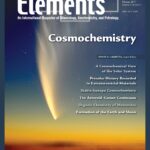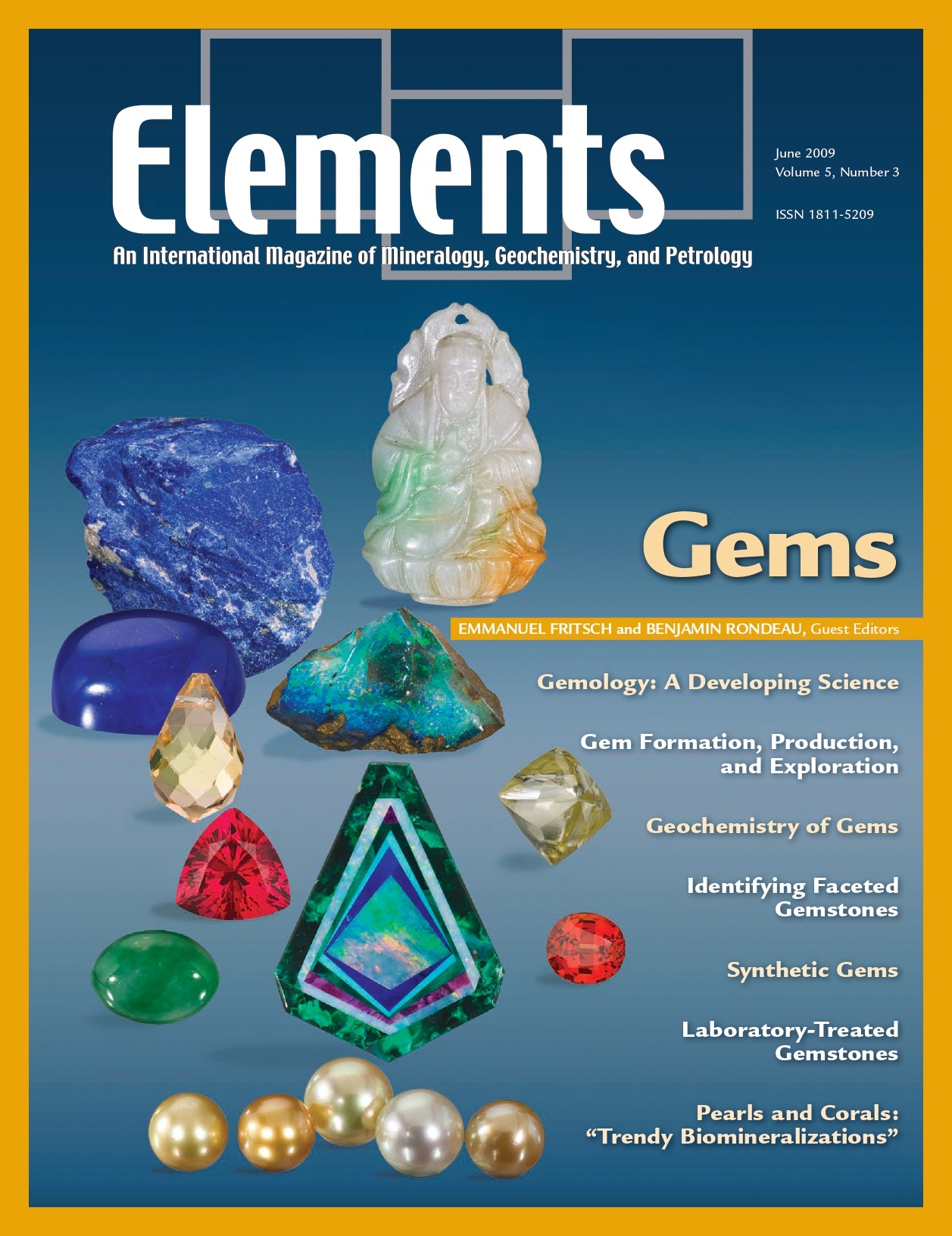
Bentonites – Versatile Clays, April 2009, Vol. 5, No. 2
June 28, 2024
Cosmochemistry, February 2011, Vol. 7, No. 1
June 28, 2024Gems, June 2009, Vol. 5, No. 3
$20.00
Most gems are natural minerals, which, although scarce and small, have a major impact on society. Their value is directly related to proper identification.
Gems
June 2009, Vol. 5, No. 3
Most gems are natural minerals, which, although scarce and small, have a major impact on society. Their value is directly related to proper identification. The determination of the species is key, of course, and must be done non-destructively. This is where classical tools of mineralogy come into play. However, other issues are paramount: Has this gem been treated? Is it natural or was it grown in a laboratory? For certain varieties, being able to tell the geographical provenance may enhance value considerably. These issues necessitate cross-linking the formation of gems with their trace-element chemistry. These unusual mineralogical and geochemical challenges make the specificity of gemology, a new and growing science, one of the possible futures of mineralogy.
Why You’ll Love Elements Magazine:
- Expert Contributors: Articles written by renowned researchers in the field of geoscience.
- Engaging Content: Join a community of readers who are passionate about Elements.
- Exceptional Quality: Each issue is printed on high-quality paper with stunning visuals and detailed illustrations that bring complex scientific concepts to life.
Order your copy of the June 2009 issue of Elements magazine today and uncover the beauty of gems.
Related products
-
User Research Facilities In The Earth Sciences, February 2006, Vol. 2, No. 1
$20.00Earth scientists rely on effective access to user research facilities that provide state-of-the-art analytical instrumentation. This thematic issue focuses on some of these facilities and how to use them.
-
Carbon Dioxide Sequestration, October 2008, Vol. 4, No. 5
$20.00Storage of carbon in the subsurface involves introduction of supercritical CO2 into rock formations beneath the surface of the Earth, typically at depths of 1000 to 4000 meters. Although CO2 is a relatively benign substance, the volume being considered is large.
-
Energy: A Geoscience Perspective, June 2007, Vol. 3, No. 3
$20.00The issue of energy resources in the future may be one of the most important in the 21st century. Future climate change and the ways to abate it while still supplying needed energy will impact future political relations, world economics, human health, and the environment.




